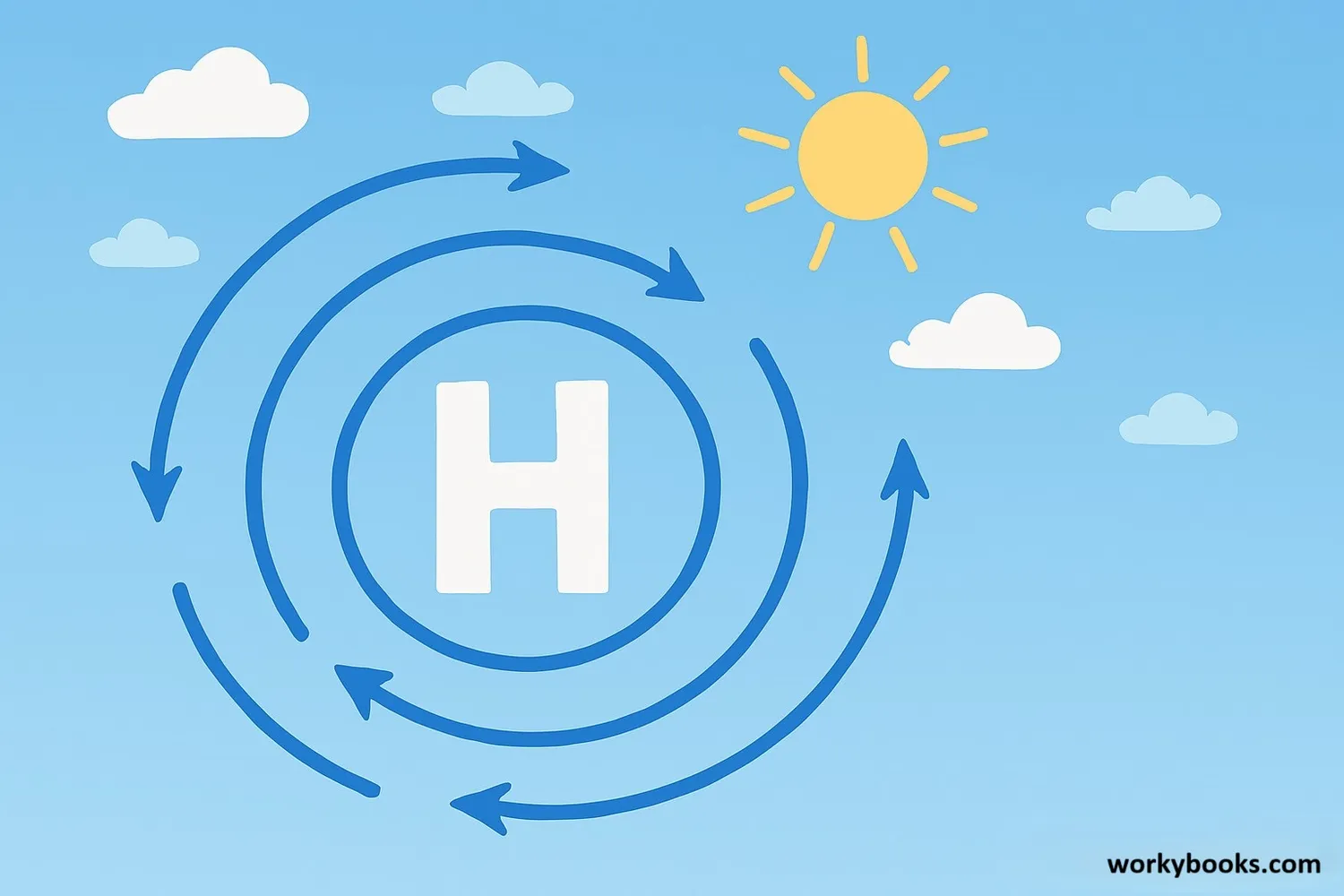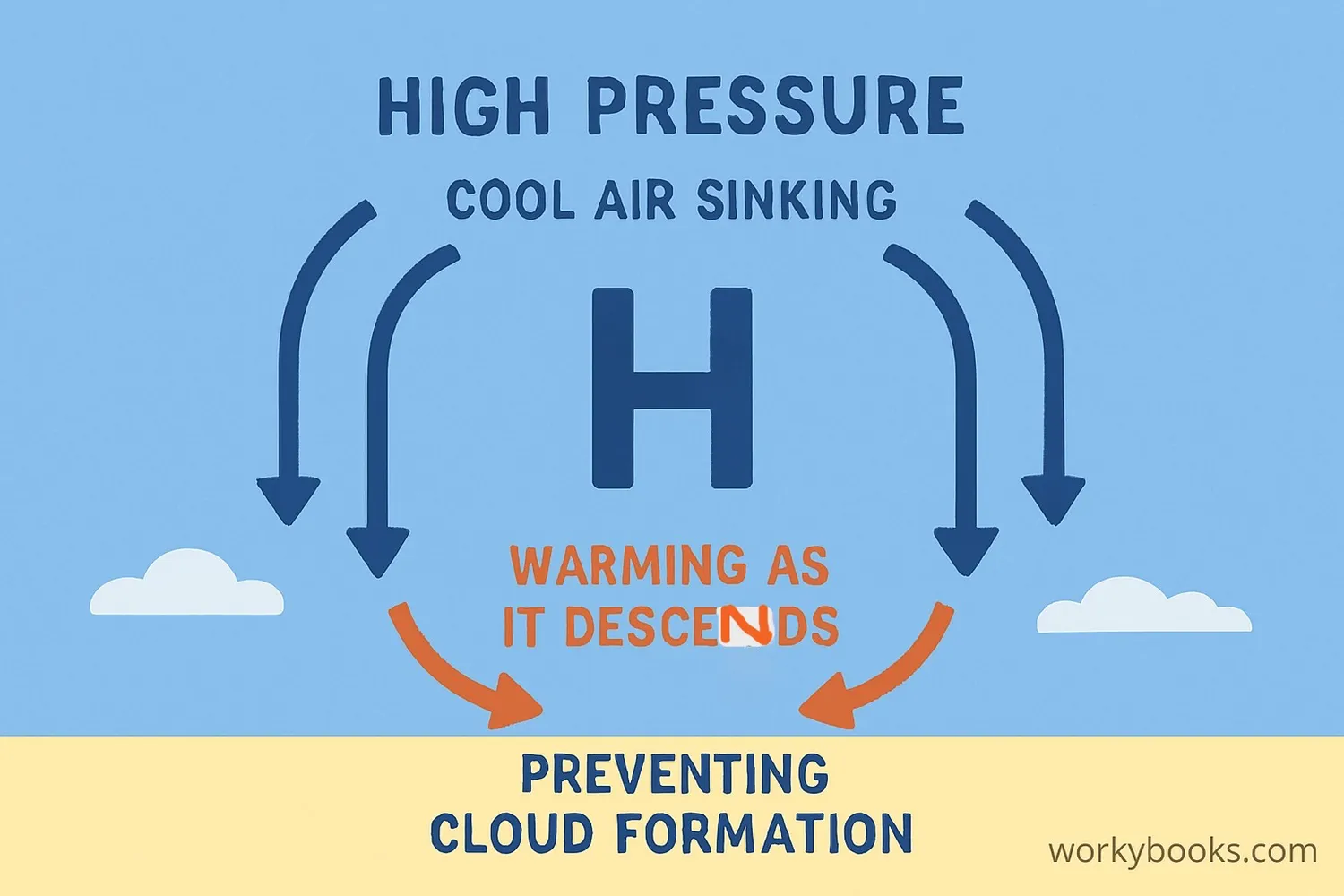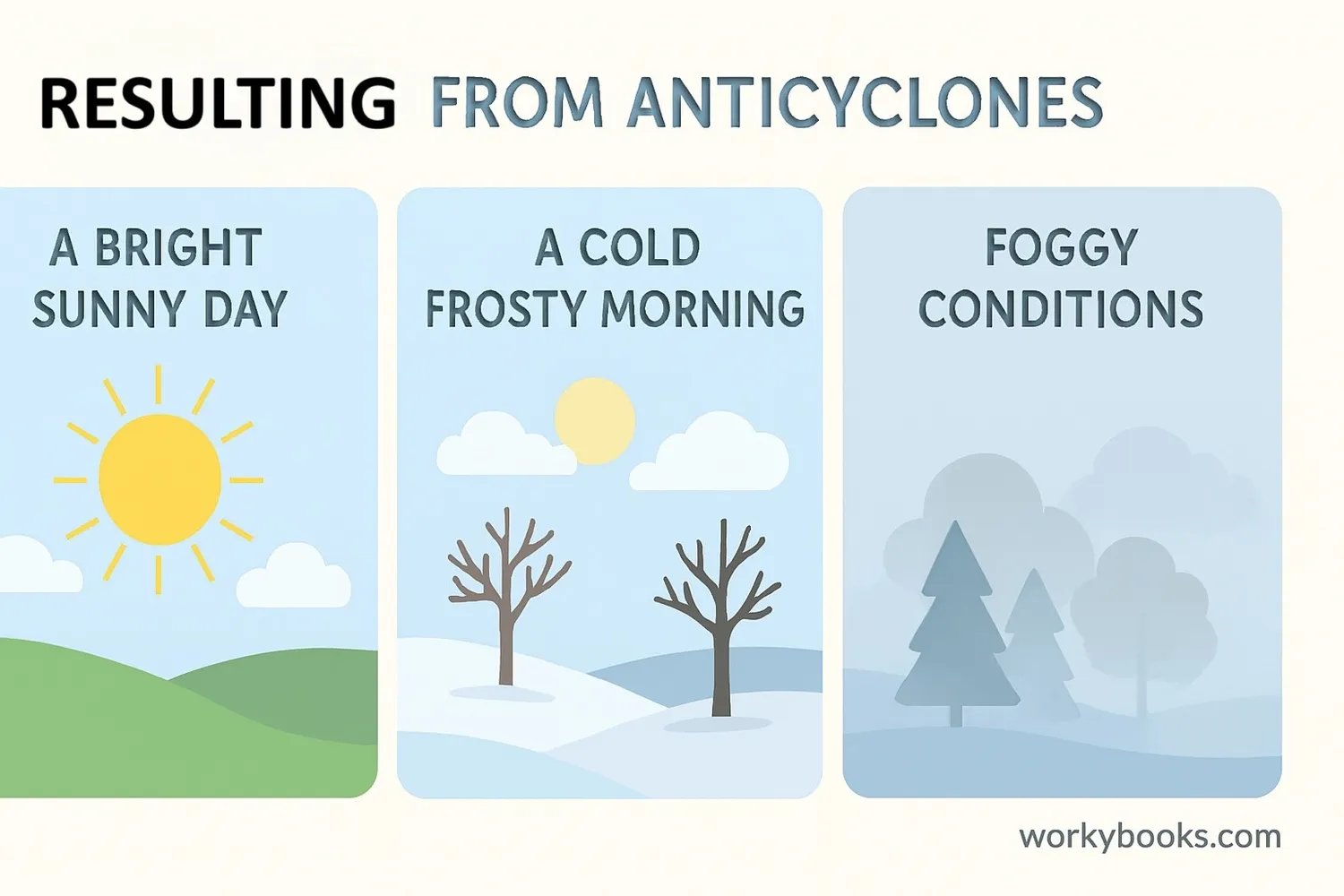Anticyclones - Definition, Examples, Quiz, FAQ, Trivia
Discover how high pressure systems create clear weather patterns
What is an Anticyclone?

An anticyclone is a weather system with high atmospheric pressure at its center. It's the opposite of a cyclone (low pressure system). Anticyclones are often called high pressure systems.
Imagine the air above us as a heavy blanket. In an anticyclone, this "air blanket" is heavier than in surrounding areas. This heavy air sinks down toward the ground, which prevents clouds from forming and brings us clear, sunny weather!
In the northern hemisphere, winds around an anticyclone move in a clockwise direction. In the southern hemisphere, they move counter-clockwise.
Weather Fact!
Anticyclones can last for several days or even weeks, bringing long periods of stable weather.
How Anticyclones Form

Anticyclones form when air sinks toward the Earth's surface. As air sinks, it warms up and becomes drier. This sinking and warming process prevents clouds from forming, leading to clear skies.
Air Sinks
Cool air sinks down toward the Earth's surface
Air Warms
As air sinks, it gets compressed and warms up
Moisture Evaporates
Warmer air causes clouds to evaporate
High Pressure Forms
Sinking air creates a high pressure area
Winds Spiral
Winds move outward and clockwise (NH) around the center
Anticyclones can form in different ways:
• Subtropical highs: Form in areas like the Azores and Bermuda
• Polar highs: Form over cold polar regions
• Migratory highs: Move with weather systems across continents
Pressure Power!
The highest sea-level pressure ever recorded was 1084.8 hPa (hectopascals) in Siberia during an intense anticyclone.
Weather Associated with Anticyclones

Anticyclones bring some of our favorite weather! But they can also create some challenging conditions depending on the season.
Clear Skies
Sunny days with few or no clouds
Dry Air
Lower humidity and less chance of rain
Light Winds
Gentle breezes moving clockwise around the high
Seasonal Differences:
• Summer: Hot, sunny days with warm nights. Perfect beach weather!
• Winter: Clear skies can lead to cold nights and frosty mornings. Fog may form in valleys.
• Spring/Fall: Pleasant days with cool nights - great hiking weather!
While anticyclones bring beautiful weather, they can also cause problems. Long periods without rain can lead to droughts, and in winter, they can create temperature inversions that trap pollution near the ground.
Anticyclone Quiz
Test your knowledge about high pressure systems with this quiz! Answer all 5 questions to see how much you've learned.
Frequently Asked Questions
Here are answers to some common questions about anticyclones:
Weather Trivia
Discover some amazing facts about anticyclones and weather patterns!
Pressure Power
The air pressure at sea level is normally about 1013 hPa (hectopascals). During strong anticyclones, it can reach 1050 hPa - that's like having an extra 375 kg (825 lbs) of air pressure on every square meter!
Record High Pressure
The highest sea-level pressure ever recorded was 1084.8 hPa in Agata, Siberia on December 31, 1968. This intense anticyclone created extremely cold conditions with temperatures below -50°C (-58°F)!
From Space
Satellites can easily spot anticyclones from space! They appear as large, cloud-free circular areas on weather satellite images. Some are so big they cover entire regions of continents.
Global Patterns
Earth has permanent anticyclones at about 30° north and south latitude. These high-pressure zones help create the world's major deserts like the Sahara, where sinking air prevents rain clouds from forming.


